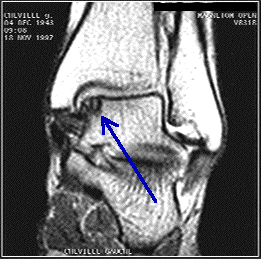Women Empowerment Wednesday May 2021: GIRLS to WOMEN — Learn how to get your power with Dr. Pulapaka
GIRLS to WOMEN — Learn how to get your power
The discrepancy of equal pay starts at home with an ALLOWANCE. Read the blog, then watch the video on getting your power.
“What’s the big deal? It’s just a kid’s allowance.”
Well, the big deal is disturbing, just wait for it as you read.
From the beginning, a family knows it can get away with paying their own girls less: based on data from 10,000 families, that boys were given an average weekly allowance of $13.80, their female counterparts, were given only $6.71.
BUSYKID PAY ANALYSIS FINDINGS
AVERAGE WEEKLY ALLOWANCE
Boys $13.80
Girls $6.71
BUSYKID PAY ANALYSIS FINDINGS
AVERAGE BONUS GIVEN
Boys $17.01
Girls $15.54
The most damning survey comes from Westpac, which found that boys earned an average of $48 for spending 2.1 hours on chores per week, while girls only got $45 for working for 2.7 hours on household jobs. Teaching girls, they have to work harder for less pay, even from their own parents.
Is it fixable? What the experts say: If you are giving an allowance.
Quick tips to help girls regain their power.
“1. Be clear. Keep it simple, and be realistic. The key is letting kids know from the start what this money is to be used for.
2. Be consistent. It’s actually less important to make the “right” rules than it is to stick to whatever you decide.
3. Give control. It’s fine to have some spending rules, such as limited candy, no toy guns and a ban on lipstick for little ones. But in general, let your kid have the freedom to buy what she/he wants.
4. Use cash. Studies show that all of us spend more when we use credit or some other form of online payment, since the pain of paying is put off to the future.
5. No chores. Research shows that chores are good for kids because they teach responsibility. But no chores, unless you’re willing to negotiate each time you want your kid to empty the dishwasher.”
By — Beth Kobliner
One of the nation’s leading authorities on personal finance for young people, Beth Kobliner is a commentator and journalist and the author of two New York Times bestsellers: “Get a Financial Life: Personal Finance In Your Twenties and Thirties” and an essential guide for parents, “Make Your Kid a Money Genius (Even If You’re Not).”
But, what does this translate into? This chore pay gap also demonstrates to girls that household work doesn’t count as work that should be rewarded. It’s no wonder then that when they grow up, women spend more than twice as much time on unpaid work (like childcare and household chores) as men do each week, while men find more time to relax, reported Pew Research.
Remember the 1980 Jane Fonda comedy Nine to Five?
Three women secretly take over the office management from their sexist boss. Those women put in place a flexible hour program, a daycare center, and equal pay. The movie ends with the three women opening a bottle of champagne and celebrating their achievements. When one woman comments that they still didn’t get equal pay, another responds that this is just the beginning and “they’ll get there”.
Thirty-eight years later, we’re astonishingly still not there. Republicans voted down equal pay every time, citing the explanation of diverging professional preferences between men and women. So, how does that impact your wallet?
Women are almost half of the workforce. They are the sole or co-breadwinner in half of American families with children.
Now, by age 37, women were earning $61,278 and men were earning $83,747.
Projected to age 60, assuming the college-educated Millennials experience earnings growth similar to similarly educated women and men that came before them, women would be earning $73,136 at age 60 and men would be earning $121,061.
WAIT, WAIT FOR IT!
Between the ages of 25 and 60, college-educated Millennial women, compared with men, would have lost more than a million dollars—$1,066,721 —if they work full-time, year-round in every year.
That is the cumulative lifetime earrings losses – $1,066,721.
Source: IWPR analysis of data from the 1975-2017 Current Population Survey Annual Social and Economic Supplement (Integrated Public Use Microdata Series, Version 5.0).
White women will not reach parity, equal pay, until 2059. For women of color, the rate of change is even slower: Hispanic women will have to wait until 2233 and Black women will wait until 2124 for equal pay.
If women want change, it must start at home and the evaluation of their own family’s diverging allowance preferences. Then, they must make the decision to close the gender gap, teach young girls to ask for equal allowance/sports fees/equipment etc, for equal work.
Women Inspire Change! That is why I seat down with Kimberly Rosier Jean-Louis this month to talk about “tips, tools, and testimonials from successful entrepreneHERs.” What a blast. Thank you for focusing on women in our community. It was a pleasure to meet and chat with Kendra and Barbie as well.
